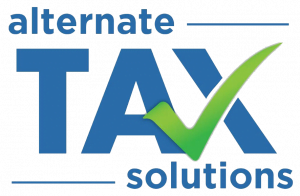Employee Retention Tax Credit Background
This is the first of several Blog Posts which will help you understand the rules and regulations of claiming the Employer Retention Tax Credit. You have probably heard or seen advertising claiming how much a company can get you in payroll tax refunds. This Blog (and future ones) will lay out exactly how the credit works and what you must do to receive any refunds that you may be entitled to.
One crucial provision in the Coronavirus Aid, Relief, and Economic Security (CARES) Act that was enacted on March 27, 2020, is the Employee Retention Credit (ERC). The ERC provides an incentive for businesses, including certain tax-exempt organizations, affected by COVID-19 and its associated economic impacts to retain and pay their employees.
The CARES Act was enhanced, modified, extended by Con App 2021 (Con App (Division EE—Taxpayer Certainty Disaster Tax Relief Act 2020, §206-207), and by the American Rescue Plan Act of 2021 (H.R. 1319, P.L. 117-2, signed by the President on 03/11/21) which clarified some of the original rules and added and amended new rules.
To take advantage of the Employer Retention Tax Credit, (ERTC), also referred to as the Employer Retention Credit (ERC), employers must qualify for one of three “eligibility” tests, and must have qualified wages.
Qualified Wages
The ERTC is a refundable credit against federal payroll taxes that you have paid. For the second quarter of 2020 941 payroll tax returns through the second quarter 2021 941 payroll tax returns, the credit is against the FICA tax that was paid. The third and fourth quarter of 2021 refundable credit is against the Medicare tax that was paid. Therefore, if you did not file a form 941 for these periods, there is no refund to be had.
Secondly, if you had wages that were paid, but not subject to FICA wages, then those wages do not qualify for the credit.
Who is Eligible?
The employee retention credit is available only to employers that are eligible employers. Section 2301(c)(2)(A) of the CARES Act defines the term “eligible employer” as any employer carrying on a trade or business during calendar year 2020, and, with respect to any calendar quarter, for which:
- the operation of the trade or business carried on during calendar year 2020 is fully or partially suspended due to orders from an appropriate governmental authority limiting commerce, travel, or group meetings (for commercial, social, religious, or other purposes) due to COVID-19, or
- such calendar quarter is within the period in which the employer had a significant decline in gross receipts, as described in section 2301(c)(2)(B) of the CARES Act.
These criteria establish two of the major “tests” for determining whether an employer is eligible to claim this credit.
- Your company’s operations had to be fully or partially shutdown or disrupted due to a government order
- Your company’s gross receipts for individual quarters in 2020 and 2021 must have experienced a decline of 50% and 20% respectively in comparison to the same quarter in 2019.
Future Blogs will delve into depth as to what is an Eligible Employer, Qualified Wages, Qualifying Events, Payroll Adjustments in the calculation, and the actual mechanics of filing for the reunds.





